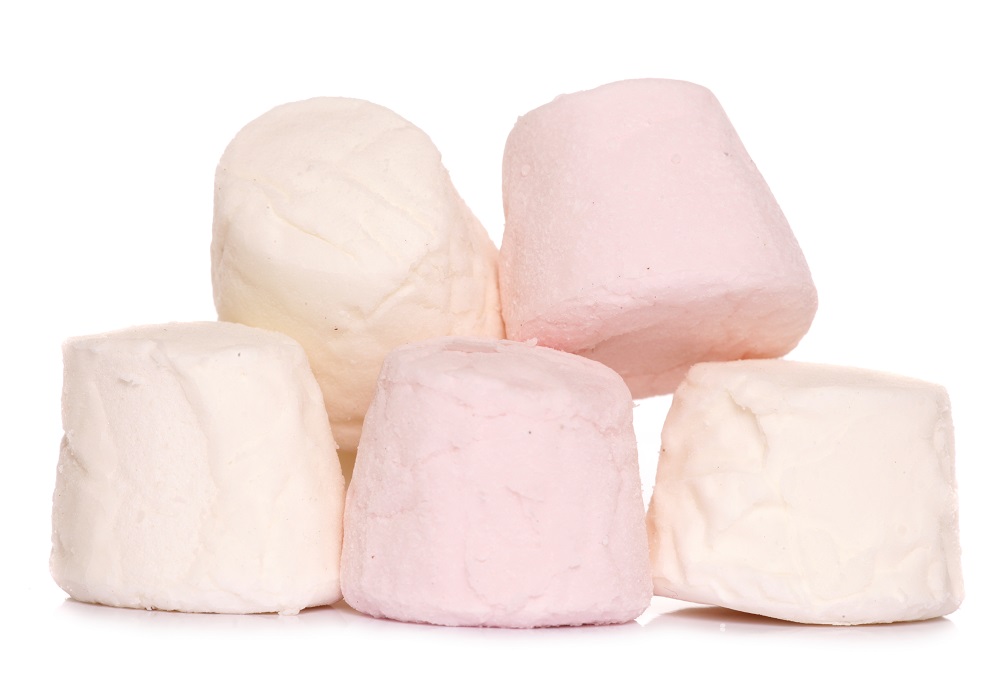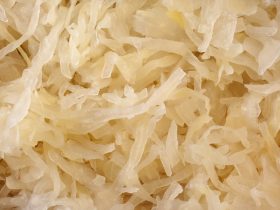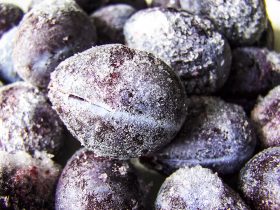Marshmallows are a commonly enjoyed dessert that also double as a topping in many dishes. Consisting of only sugar, water, and a small amount of gelatin, they achieve their characteristic fluffiness from the process of whipping them while they are heated.
In short- yes, marshmallows can be frozen. In fact, marshmallows freeze very well due to their relatively low water content, maintaining their shape and consistency despite the freezing temperatures1. While marshmallows may last up to two months out in your pantry, they will begin to grow stale within hours. This may be avoided with the proper procedures.
How Long Do Marshmallows Last Outside of the Freezer?
Marshmallows that remain unopened and sealed within the container that they originally came from can and should last up to a month after the expiration date printed on the package.
The majority of confectionary companies use a multitude of sterilization techniques as well as preservative ingredients to ensure that their products remain shelf-stable for as long as possible.
Of course, these factors no longer apply should the package be opened and the marshmallows exposed to the elements, namely oxygen. In order to best preserve their quality and avoid the dreaded staleness of oxidized marshmallows, make sure to store them in an air-tight container.

Can Marshmallows Be Refrigerated Instead?
Should you choose instead to refrigerate your marshmallows in lieu of placing them in a freezer, this may act as a double-edged sword.
Placing your marshmallows in the fridge will entirely bypass the need to thaw them should you find yourself in a pinch, but their relative preservation will be shorter than that of a freezer. In the end, it is entirely dependent on your goals for the marshmallows.
Should you need to preserve large batches of marshmallows for long term use, it is recommended that you freeze your candies instead.
Does this Article Apply to Home-made and Bakery-made Marshmallows?
While the procedures and ingredients used by confectionary companies help preserve their marshmallows for as long as possible, home-made marshmallows as well as ones made in bakeries often do not incorporate these techniques.
The answer is yes, to an even greater extent – it is advisable to freeze your marshmallows no matter their source, but more so if they have not undergone other forms of preservation.
Required Equipment for Freezing
In order to freeze marshmallows properly, the required equipment will be several resealable plastic pouches, a suitably large enough container, and a freezer capable of near-zero temperatures.
Separating the Marshmallows
While freezing marshmallows is relatively straight-forward compared to freezing other types of food, there are still several precautions one should take in order to extend the quality of their texture and taste for as long as possible.
Firstly, attempt to gauge how many marshmallows you will need in the future, and divide the entirety of your marshmallows into batches of approximately this amount. Doing this will ensure that you will not need to remove the totality of your marshmallows from the freezer at once.
Doing this will also have the added bonus of preventing your marshmallows from clumping should there be any excess moisture between them, or simply from their homogenous mixture binding together under pressure.
Freezing the Marshmallows
After divvying up all your candies, place them within your resealable plastic bags, ensuring that any excess moisture and air has been removed from within the bag. Should you wish to take extra care, placing a single sheet of tissue paper within the bag will absorb any moisture that may enter the bag. This is doubly useful in more humid climates.
Once all your marshmallows have been bagged, place the bags in a second container large enough to contain the bags without them pressing against each other. Adding pressure to the marshmallows will deform them and, in certain brands of marshmallow, cause them to bind together.
After ensuring the candies are secure within the bag, and the bags secure in the container, simply place them in the freezer.
Thawing your Marshmallows
Thawing marshmallows is relatively simple; place the sealed bag at room temperature for several minutes. The clearest way to determine if your candies are fully thawed is to press on them lightly.
Marshmallows retain much of their soft texture while frozen, and their relatively simple flavor remains the same so long as storage standards have been followed appropriately.
In the event that the marshmallows are being thawed for cooking purposes, there is no further need to defrost them. Directly adding them to your dish is all that is required.
What Can Cause Spoilage in Marshmallows?
While marshmallows keep well both in and out of storage, the introduction of certain factors can hasten their expiration. It is important to ensure they are kept in an environment free of these factors to prevent wastage of your candies.
The primary agent of spoilage for marshmallows is moisture. The introduction of humid air or even water droplets will initiate the growth of both fungal and bacterial growth, as well as dissolve the marshmallows.
A second factor in the spoilage of marshmallows are the presence of insects, of which are capable of entering tiny entrances in containers. Ensure that, if not stored in the freezer, your marshmallows are in an air-tight container.
Signs of Spoilage in Marshmallows
While marshmallows commonly come in a multitude of colors, any deviation from their original color is often a sign of spoilage. This is more so for off-color patches present on the surface of the candy.
Texture wise, should the marshmallows present a soupy or liquid texture, they have likely been exposed to excess moisture and may have developed bacterial or fungal cultures. This is often due to poor storage.
Though marshmallows may shrink and grow stale over time, this is not often a sign of spoilage, and is instead the effect of both dehydration and the interaction of oxygen with the sugars present in the candy2.
While still edible, stale candy may prove unpleasant to eat.
References:
1. Unknown author (April 2018). Candies, Marshmallows U.S. Department of Agriculture
2. Professor Patricia Shapley (2012). Oxidation States in Sugar Reactions. University of Illinois http://butane.chem.uiuc.edu/pshapley/GenChem2/B7/1.html





Hi, I'm Dom
Dom Eats was started to help other people fall in love with food. While cooking can feel intimidating, it doesn't have to be.